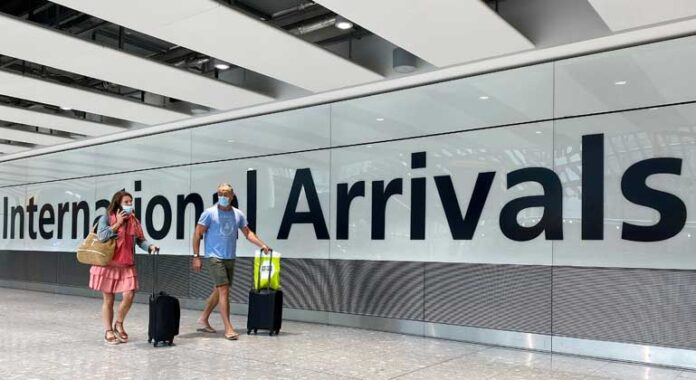Fully vaccinated people from countries that do not require a visa will be allowed to enter the Philippines next month, the government said.
The travelers from so-called non-visa-required countries should have stayed “exclusively” in an area tagged as low-risk from the coronavirus for two weeks, President Rodrigo R. Duterte’s spokesman Karlo Alexei B. Nograles said at a regular news conference.
The tourists should have passports valid for at least six months at the time of arrival and a return or outbound ticket to their country of origin or next country of destination, he added.
Qualified foreign tourists will not be quarantined if they test negative for the coronavirus within 72 hours prior to their departure from the country of origin, the presidential spokesman said. But they are enjoined to self-monitor for symptoms until the 14th day from their arrival with their arrival date as the first day, he added.
The new rules for foreign travelers will take effect from Dec. 1 to 15, Mr. Nograles said. “If we see that it is being implemented well, we may extend the dates.”
Tourism is an important sector for the Philippines, accounting for at least 12.8% of its growth output in 2018, government data showed. In 2020, when the pandemic started hitting the country, the sector’s contribution to the economy fell to 5.4%.
For the past five years, the average share of tourism to the Philippine economy was 10.5%.
The new rule for foreign travelers “will enhance tourist arrivals and give hope to business owners who were severely affected by the pandemic,” said Noe Lineses, a tourism official in the popular beach destination Puerto Galera in Oriental Mindoro, south of the Philippine capital.
It will be a “booster shot” for businesses that rely on foreign travelers, he said in a Facebook Messenger chat. “It will create more jobs and stimulate the economy.”
Puerto Galera, which is considered as the mini version of Boracay in central Philippines, has started accepting vaccinated tourists.
COVID VARIANT
Countries included in the Philippines’ green list for travel are considered at a low-risk from the coronavirus.
China — where the first case of the coronavirus was reported in late 2019 — and 44 other countries are currently on that list.
China recently struggled to manage a coronavirus outbreak believed to be spurred by the highly contagious Delta variant. The country had tightened mobility restrictions due to the outbreak, with capital Beijing enforcing lockdowns in several residential compounds.
Mr. Nograles said Philippine health authorities are “aware” that a new coronavirus variant with a number of mutations has been detected in Africa and other countries.
“We are intently monitoring the situation,” he said, noting that the country is now in talks with the World Health Organization to get updates regarding the new variant known as B.1.1.529.
The variant has more than 50 mutations, BBC reported, citing a health expert in South Africa.
“This variant did surprise us, it has a big jump on evolution [and] many more mutations that we expected,” Tulio de Oliveira, director of South Africa’s center for epidemic response, was quoted as saying. It was very different from other variants that have circulated.
Dana Sandoval, spokesperson of the Philippine immigration bureau, said they are prepared to implement restrictions to prevent the entry of the variant.
The Philippine immigration bureau anticipates an increase in passenger traffic. It has already banned its workers assigned at international airports from going on leave during the holiday season
With the expected increase in passenger volume in Philippine ports, the government should improve its coronavirus testing capacity and establish additional testing centers in public areas, OCTA Research Fellow Fredegusto P. David said in a Facebook Messenger chat. — Kyle Aristophere Atienza

